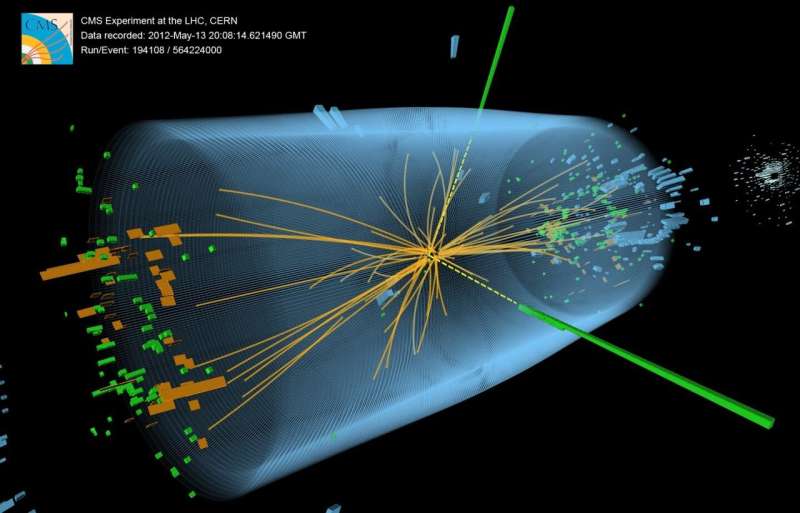This article has been reviewed according to Science X's editorial process and policies. Editors have highlighted the following attributes while ensuring the content's credibility:
fact-checked
trusted source
proofread
CMS collaboration releases Higgs boson discovery data to the public

As part of its continued commitment to making its science fully open, the CMS collaboration has just publicly released the combination of CMS measurements that contributed to establishing the discovery of the Higgs boson in 2012.
This CERN release coincides with the publication of the Combine software—the statistical analysis tool that CMS developed during the first run of the Large Hadron Collider (LHC) to search for the unique particle, which has since been adopted throughout the collaboration.
Physics measurements based on data from the LHC are usually reported as a central value and its corresponding uncertainty. For instance, soon after observing the Higgs boson in LHC proton–proton collision data, CMS measured its mass as 125.3 plus or minus 0.6 GeV (the proton mass being about 1 GeV). But this figure is just a brief summary of the measurement outcome, a bit like the title of a book.
In a measurement, the full information extracted from the data is encoded in a mathematical function, known as the likelihood function, that includes the measured value of a quantity as well as its dependence on external factors. In the case of a CMS measurement, these factors encompass the calibration of the CMS detector, the accuracy of the CMS detector simulation used to facilitate the measurement and other systematic effects.
A likelihood function of a measurement based on LHC data can be complex, as many aspects need to be pinned down to fully understand the messy collisions that take place at the LHC. For example, the likelihood function of the combination of CMS Higgs boson discovery measurements, which CMS just released in electronic format, has nearly 700 parameters for a fixed value of the Higgs boson mass. Among these, only one—the number of Higgs bosons found in the data—is the physics parameter of interest, while the rest model systematic uncertainties.
Each of these parameters corresponds to a dimension of a multi-dimensional abstract space, in which the likelihood function can be drawn. It is hard for humans to visualize a space with more than a few dimensions, let alone one with many.
The new release of the likelihood function of the CMS Higgs boson discovery measurements—the first likelihood function to be made publicly available by the collaboration—allows researchers to get around this problem. With a publicly accessible likelihood function, physicists outside the CMS collaboration can now precisely factor in the CMS Higgs boson discovery measurements in their studies.
The release of this likelihood function, as well as that of the Combine software, which is used to model the likelihood and fit the data, marks a new milestone in CMS's decade-long commitment to fully open science. It joins hundreds of open-access publications, the release of almost five petabytes of CMS data on the CERN open-data portal and the publication of its entire software framework on GitHub.
More information: CMS Higgs boson observation statistical model, CERN (2024). DOI: 10.17181/c2948-e8875
Provided by CERN





















